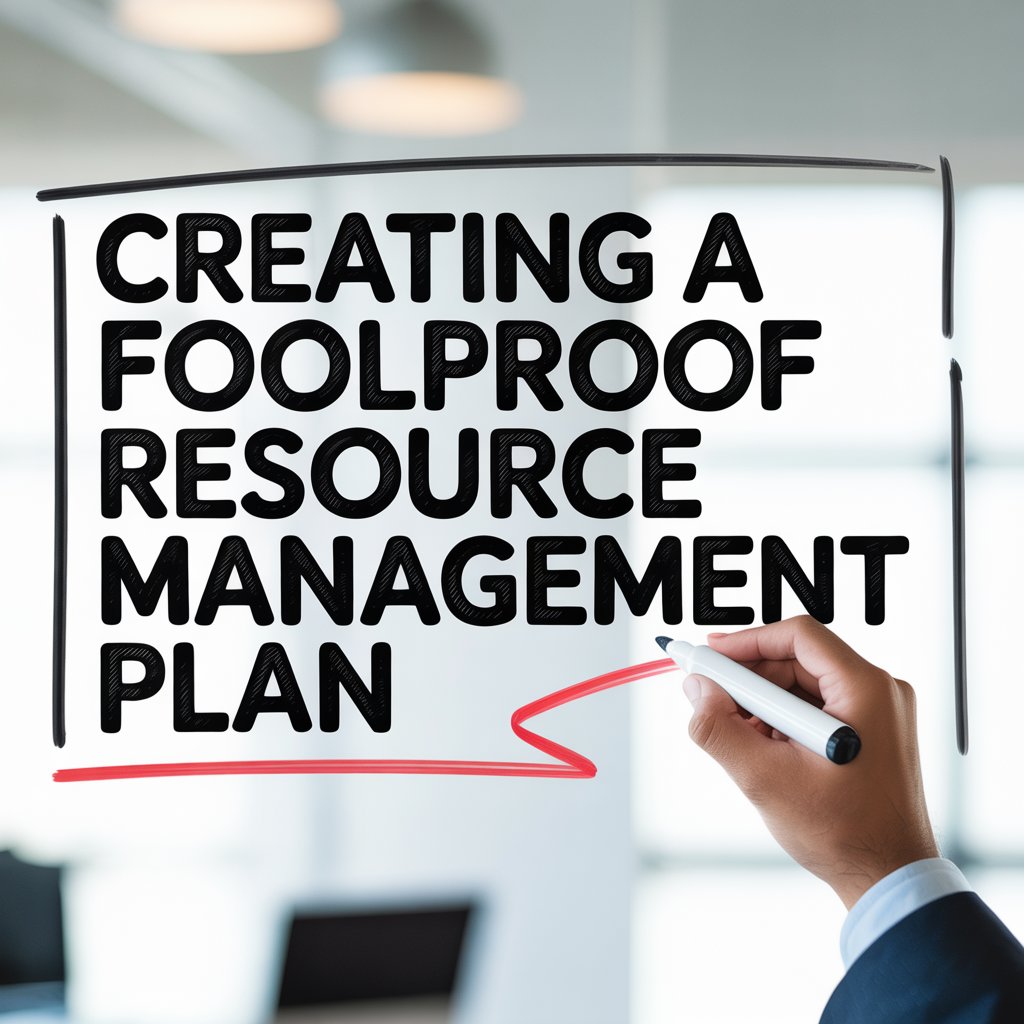Let’s get one thing straight: resource planning isn’t some nice-to-have spreadsheet tucked away in a shared folder. In today’s world, a resource management plan is the blueprint that decides whether your team thrives or tanks.
But let’s be honest, most plans look great on day one. Fast forward a few weeks, and it’s chaos: burned-out teams, rushed timelines, projects teetering on the edge. Somewhere between kickoff and crisis, the “plan” became a patchwork of guesswork.
If that sounds familiar, you’re not alone. And you’re definitely not stuck. Here’s a step-by-step playbook for building a resource management plan that works—one that’s realistic, flexible, and doesn’t crumble under pressure. But first, let’s dive in and understand the basics.
Why Is Resource Planning No Longer Optional?
Too often, teams have equated resource planning with a chain of confusing messages on Slack and gut feelings. While the issue is not about the effort, but lies within the approach. It starts with optimism, ends with the classic “how did we not see this coming?”
Resource planning isn’t about completing a checklist. It’s about knowing what you have, what’s coming, and how to connect the two without exhausting the available resources or budget. That’s where having a solid system and the right tools makes all the difference.
Before we dive into the how, let’s discuss the why. A good resource management plan means:
- You always know who’s doing what, when, and for how long
- You stop making hiring or allocation decisions based on gut
- No one’s twiddling their thumbs while others drown
- You stay billable, profitable, and panic-free
Here’s the thing about resource management: most people are doing it wrong. They use sticky notes that mysteriously disappear, or worse, their memory (Spoiler alert: your memory is not a resource management tool).
What Makes Resource Management So Tricky?
Most resource management plans treat resources like chess pieces. Move them around the board and hope for the best. But real resource management is more like conducting an orchestra where half the musicians are working remotely, three are in different time zones, and the sheet music keeps changing mid-performance.
Resources aren’t just “things” you allocate. They’re people with lives, skills, limitations, and the occasional Monday morning meltdown (we’ve all been there), budgets that shrink faster than your favorite jeans in hot water, or the equipment that breaks down at the worst possible moment.
Understand What You’re Managing
The Hidden Resources Everyone Forgets.
While you’re busy allocating people and budgets, don’t forget about the resources that silently make or break projects:
- Mental bandwidth
- Context switching costs
- Communication overhead
- Decision-making capacity
People Aren’t Spreadsheet Cells.
Your team members aren’t interchangeable units. Each person brings unique skills, work styles, and availability patterns. This isn’t touchy-feely management speak; it’s practical intelligence that directly impacts your project outcomes.
Smart resource management means understanding not just what your people can do, but when they’re at their best, how they prefer to work, and why they’re motivated.
In this guide, we’ll walk through how to build a plan that’s smart, adaptable, and genuinely foolproof. One that scales, flexes, and helps your team stay focused, not frantic.
Step 1: Map Your Resource Universe
Know What (And Who) You’re Working With.
Creating a comprehensive inventory is important. You need to know what you’re working with before you can manage it effectively. Before planning anything, get your hands on the real numbers. We’re talking:
- Names, roles, skills
- Locations and time zones
- Availability (contract, full-time, part-time)
- Leave calendars, exceptions, and working hours
- Hourly rates (cost + billing)
- Deadlines, dependencies, and buffer zones
- Equipment, software licenses, office space, and infrastructure
The Skills Matrix Reality Check.
Most of the time, organizations have a vague idea of who can do what, but that’s not always enough. You need a detailed matrix that tracks not just what people can do, but what they want to do and how good they are at it.
Pro tip: Don’t rely on self-reporting for skill assessments. Jane might say she’s “proficient” in project management, but if her last three projects were delivered late, that data tells a different story.
Step 2: Predict the Unpredictable
Scenario Planning Isn’t Optional.
Here’s where most resource management tools fall apart – they assume everything will go according to plan. Spoiler alert: it won’t.
But if you want plans that hold up, then prepare and forecast by building scenarios for:
- Best case: Everything runs smoothly
- Realistic case: Normal challenges and delays
- Worst case: Murphy’s law in full effect
Don’t Allocate Blindly. Know What’s Coming.
This isn’t just about scoping work — it’s about forecasting how much effort will be needed, and when. List out:
- Projects and key phases
- Start and end dates
- Effort estimates
- Task dependencies
- Deadlines and non-negotiables
- Internal vs. billable
A resource management software like eResource Scheduler will let you map out workload with timelines, roles, and estimated hours. You’ll see where work exceeds capacity before it becomes a fire drill. It’s like weather forecasting — but for your resources.
Buffer Strategies That Work.
We’ve all heard the traditional advice to “add 20% buffer time”. But in today’s scene, that’s like saying “pack an umbrella” for a hurricane. Smart buffer strategies are more nuanced:
- Skill-based buffers: More buffer for complex, unfamiliar tasks
- People-based buffers: Account for work patterns and reliability at the individual level
- Dependency buffers: Extra time where multiple resources must coordinate
- External buffers: Larger cushions for projects involving third parties
Step 3: Design Your Resource Allocation Strategy
The Art Of Perfect Matching.
If we take a close look at resource allocation, then it is very apparent that it isn’t just about who’s available. At its core, resource allocation is about creating the perfect storm of skills, availability, motivation, and team dynamics.
No copy-pasting names into timelines. We’re talking data-backed matching. Consider these factors:
- Is this person available during the project timeline?
- Do they have the right skills?
- Are they already 85% booked elsewhere?
- Will this stretch their cost over budget?
This is where traditional methods start to crack under pressure. Managing all these variables manually is like trying to solve a Rubik’s Cube blindfolded while riding a unicycle (trust us, we’ve tried).
Right person. Right time. Right cost.
Modern work management software like eResource Scheduler transforms this complex act of juggling resources, timelines, budgets, and availability into a streamlined process. Instead of drowning in spreadsheets, you get intelligent resource matching that considers skills, availability, project requirements, and even team dynamics.
eRS doesn’t just tell you who’s free – it tells you who’s the right fit for each task, considering factors like skill development goals, workload balance, and project success patterns. Filter your resources based on availability, location, skill match, or even previous experience. Drag-and-drop into assignments. Set % allocation if it’s a split-role. It’s like having a resource management expert working 24/7 to optimize your allocations.
Step 4: Build Flexibility Into the Plan
Real-Time Intelligence Beats Hindsight.
The best work management software in the world is useless if you can’t track how it’s actually performing. You need real-time visibility into resource utilization, project progress, and emerging bottlenecks.
Here’s where eRS earns its stripes:
- Try Scenarios Before Locking Them: Test multiple allocation plans before committing
- Exceptions Handling: Adjust hours for part-timers, contractors, and teams across time zones
- Color-coded Heatmaps: Spot capacity issues before they become blockers
- Auto Alerts: Know when someone’s about to be stretched thin
Early Warning Systems.
The goal isn’t just to know when things go wrong – it’s to spot problems before they become disasters. Look for patterns like:
- Sudden drops in velocity
- Increasing communication overhead
- Resource conflict patterns
- Scope creep indicators
When you plan with a resource management software like eResource Scheduler, it means that when the unexpected hits, you’ve already got a Plan B (and maybe a Plan C).
Step 5: Learn and Optimize
Busy ≠ Productive. Know Where Time (And Money) Goes.
It’s not just about putting people on projects — it’s about knowing how they’re being used. Every completed project is a goldmine of resource management intelligence. Don’t waste it with generic “lessons learned” sessions that nobody remembers.
Track this religiously:
- Billable vs. non-billable hours
- Over or under-utilization
- Idle time
- Time spent vs. time estimated
eRS gives you all of it in clean reports that don’t need a finance degree to understand. This isn’t just reporting for the sake of management. This helps you:
- Justify new hires
- Spot burnout risks early
- Identify unbilled effort
- Stay profitable
Step 6: Get Everyone on the Same Page
Start Small, Scale Smart
The biggest mistake in resource management is trying to create the perfect plan. Stop running after perfect plans because they shatter at the first sign of change. Instead, build resilient plans that can adapt to changing circumstances. Don’t try to revolutionize your entire approach overnight. Start with a pilot project or team, learn what works and what doesn’t, then scale gradually.
Resource Planning Is A Team Sport.
Remember: the goal isn’t just to manage resources more efficiently. When you plan your resources like a team sport, everyone sees the same data in real time. It creates an environment where projects succeed, teams thrive, and organizations can take on bigger challenges with confidence. No silos. No version wars. No crossed wires.
Final Thoughts
Resource management is rapidly evolving. AI and machine learning are making resource allocation decisions that, almost a decade earlier, would have been impossible for humans to calculate manually.
The organizations that embrace these advanced resource management tools today will have a significant competitive advantage tomorrow.
This isn’t a checklist for the sake of process. It’s a blueprint for:
- Getting the right people on the right work
- Delivering projects on time, without burnout
- Staying profitable and efficient
- Building a culture of clarity, not chaos
The real win? You stop reacting and start predicting. Ready to see what a resource management tool like eResource Scheduler can do for your team? The difference is immediate, the results are measurable, and the ROI is undeniable. Because when resource management actually works, everything else gets easier. And isn’t that the whole point?






